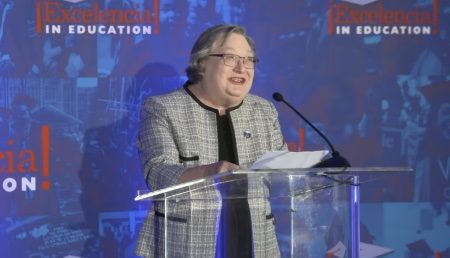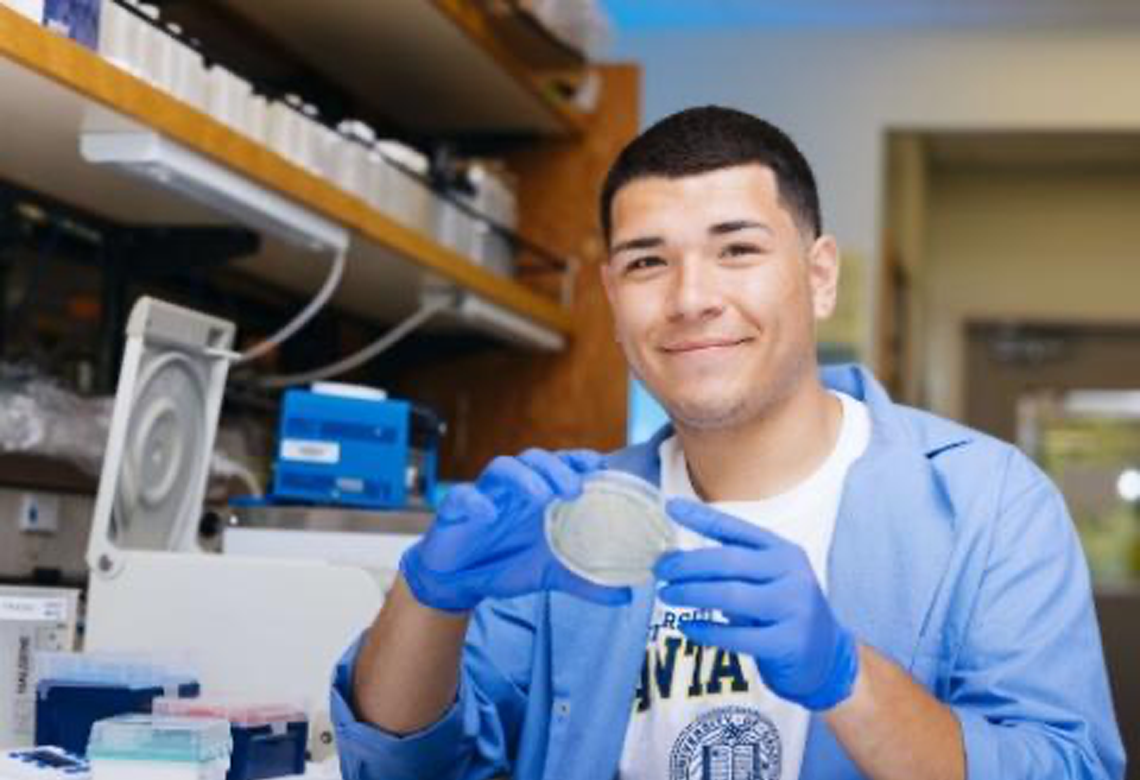University of California Santa Cruz earns the prestigious Seal of Excelencia certification for work as a Hispanic-Serving Institution
University of California Santa Cruz earns the prestigious Seal of Excelencia certification for work as a Hispanic-Serving Institution
October 6, 2022In recognition of intentional campuswide efforts to serve Latinx students, UC Santa Cruz has earned the Seal of Excelencia, following a thorough data-driven review by Excelencia in Education.
“Receiving the seal is a great honor and validation of the focused work we began in 2015, when we launched our first HSI initiatives,” said Chancellor Cynthia Larive. “Our HSI leadership team, our Center for Innovations in Teaching and Learning and so many faculty and staff across our campus have led us to this moment. I am thrilled for them and also for our students. The work we do in this arena helps us to fulfill our mission as an HSI, but it also helps us better serve all of our students.”
An institution earns the Seal of Excelencia by demonstrating alignment across the three core areas of data, practice, and leadership, which show:
- Evidence of effectiveness and intentionality in institutional practices serving Latinx students;
- Positive momentum for Latinx student progress in their data;
- Dedication to transforming the institution into an environment where Latinx students thrive; and
- Strategies in leadership that clearly articulate institutional focus on advancing Latinx student success.
Campus HSI reception
UC Santa Cruz will host a reception from 1-2 p.m. Thursday, Oct. 13, on the main floor of the McHenry Library to celebrate everyone who has contributed to the campus's work as a Hispanic-Serving Institution. The event is free and open to the campus community.
UC Santa Cruz was one of six institutions that earned the Seal of Excelencia for the first time this year. The only other University of California campuses that have earned the seal are UC Riverside and UC Merced.
The 30 seal-certified institutions enrolled 13 percent and graduated 14 percent of all Latinx students in the U.S. for the most recent year. The institutions are projecting to continue increasing their efforts to lead the nation.
“The Seal of Excelencia certification is an opportunity at a campuswide level to be self-reflective on our servingness for our Latinx students,” said Charis Herzon, director of HSI Initiatives. “The application is an opportunity to analyze disaggregated institutional trend data and individual program effectiveness. The framework highlights our greater impact when efforts are aligned. The certification is given to institutions that also demonstrate their awareness of gaps and places where there is work to be done for Latinx students to thrive. As a UCSC alumna, I am proud of our students, our campus, and our intentionality of the work we have in front of us. Together we will achieve even more.”

The HSI teams—made up of staff, faculty and students—have partnered in cross-campus collaborations to create systemic change to address barriers that have disproportionately impacted students who have been minoritized in higher education. They seek to create educational justice by empowering students and the campus’s institutional potential to serve.
In addition to its work as a Hispanic-Serving Institution, UC Santa Cruz has a long Latinx-serving history through student organizations, research, and academics.
Grupo Folklórico Los Mejicas, a student-organized folklórico dance group at UC Santa Cruz, celebrated its 50th anniversary earlier this year. The group has served as a retention and support group for Chicanx/Latinx students throughout UCSC and the Santa Cruz area.
The Research Center for the Americas, established in 1992 and set to be renamed in honor of Dolores Huerta next month, is the first research center in the UC system to combine perspectives from the traditionally disconnected fields of Latinx ethnic studies and Latin American area studies.
The Chicanx Latinx Resource Center, better known as El Centro, has served since 1995 as a hub of organized activity and resources that support student transition, retention, graduation and academic advancement.
In 2012, UC Santa Cruz faculty launched the nation’s first Latin American and Latino Studies Ph.D. program, which offers an innovative transnational and interdisciplinary approach to the study of the peoples, cultures, societies and institutions of the Américas.
That same year, Latinx students made up more than 25 percent of UCSC’s undergraduate enrollment, making it the third UC to become a Hispanic Serving Institution (HSI) according to the U.S. Department of Education definition. Three years later, UC Santa Cruz was awarded two Department of Education Title V grants to help the campus increase achievement for Latinos and all students, as well as partner with San Jose City College to help transfer students earn their bachelor's degrees at a research university. The HSI Team has earned five multimillion dollar grants to advance educational equity, cultural inclusivity, and academic achievement.
The five other newly certified Seal of Excelencia institutions are: Mercy College (New York), San Antonio College (Texas), Texas State University, University of Albany – State University of New York, and University of Texas at Arlington.
The Seal of Excelencia framework was developed with colleges and universities over many years as a tool for institutional self-assessment. The seal certification is valid for three years and institutions committed to a journey of transformation to intentionally serve their Latinx students may choose to apply for re-certification.
Excelencia began seal certification as one of the organization’s transformational strategies to lead colleges and universities to go beyond simply enrolling Latinx students. The seal provides the means to use data and practice to instill intentionality in serving Latinx students.
To advance efforts to increase opportunities for those historically underserved by higher education, UC Santa Cruz earlier this year joined other leading universities to form the Alliance of Hispanic Serving Research Universities. A coalition of 21 research universities, the alliance is working to double the number of Latinx doctoral students enrolled at member universities and increase by 20% the Latinx professoriate in member universities.
UC Santa Cruz holds the distinction of being only one of four institutions in the Association of American Universities that is both an HSI and an Asian American and Native American Pacific Islander-Serving Institution. The campus is continuing to advance and strengthen its work as a Hispanic-Serving Institution and is working to develop equity-minded partnerships that span across the region, state, and nation and through the academic pipeline.

